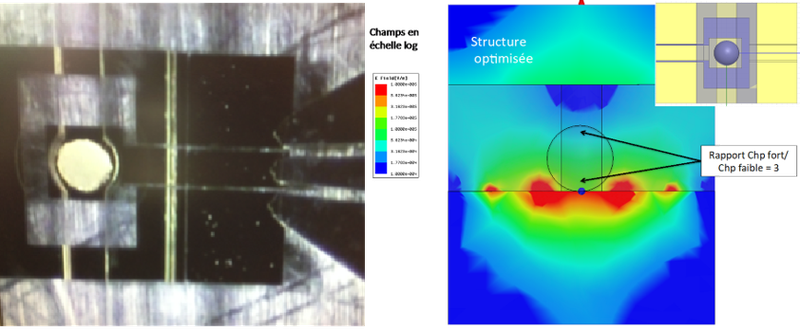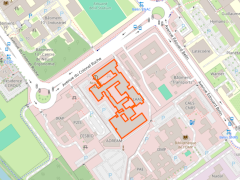Electromagnetic waves impacts on living organisms
This area focuses on the potential impact of electromagnetic waves on living beings. These waves are omnipresent in everyday life (telecommunications, geolocation, home automation) as well as in the military field (radar, jamming systems, weapons, protection of infantrymen, DREP). In this context, we are developing instrumentation and exposure systems dedicated to assessing and understanding the possible effects of these waves at the cellular level.
Context
Wave exposure instrumentation is developed in the near-field, at different scales, and characterized in dosimetry.
Various approaches are studied.
- The first is aimed at multiplexing exposure and analysis using radiofrequency applicator platforms adapted to biologists' standard well plates.
- A second approach is aimed at understanding the mechanisms by which electromagnetic waves interact with living organisms at the cellular level, whether in relation to the genome, metabolism, membranes, etc. In this context, miniaturized RF devices are being developed and adapted to the exposure of 3D multicellular models as a relevant model of the physiological complexity of in vivo. The exposures studied can be carried out at various timescales (min, hours, days, continuous, fractional or chronic), and at different frequencies, different modes (continuous, pulsed, modulated - internet of things, GSM, 5G, ...).
- The final approach considers the complexity of the exposome. This involves taking into account the variety of potentially polluting environmental agents, such as nano-particles, pesticides, light sources, and so on. In this context, we are investigating whether there are synergistic effects of these factors in association with electromagnetic waves.
Example of results
As part of the RF METRO CELL project [ANR ASTRID 2015], an electromagnetic wave exposure bench for microtissues and heterogeneous 3D cell models has been developed to conduct a comprehensive dosimetric study. This bench comprises an RF signal generation chain associated with a miniature applicator in which a micro-tissue to be illuminated is placed. With a diameter of 300 μm, it is held in the culture medium by the implementation of a microfluidic channel and lateral reservoirs (Figure 1). To guarantee reproducible exposures, a rigorous handling protocol was implemented and then validated to ensure process reliability and achieve a sufficient level of statistical confidence in the applied exposure and biological post-analyses. The downscaling of exposure chambers and cellular models enables a very wide range of Specific Absorption Rates (SAR) to be obtained, from sub-W/kg to several thousand W/kg, with thermal increments of less than a thousandth of a degree.

Figure 1: Left: Photograph of a near-field electromagnetic wave applicator charged by a micro-tissue. Right: Sectional view of the distribution of the electromagnetic field in the application area. The location of the micro-tissue is represented by the black circle.












